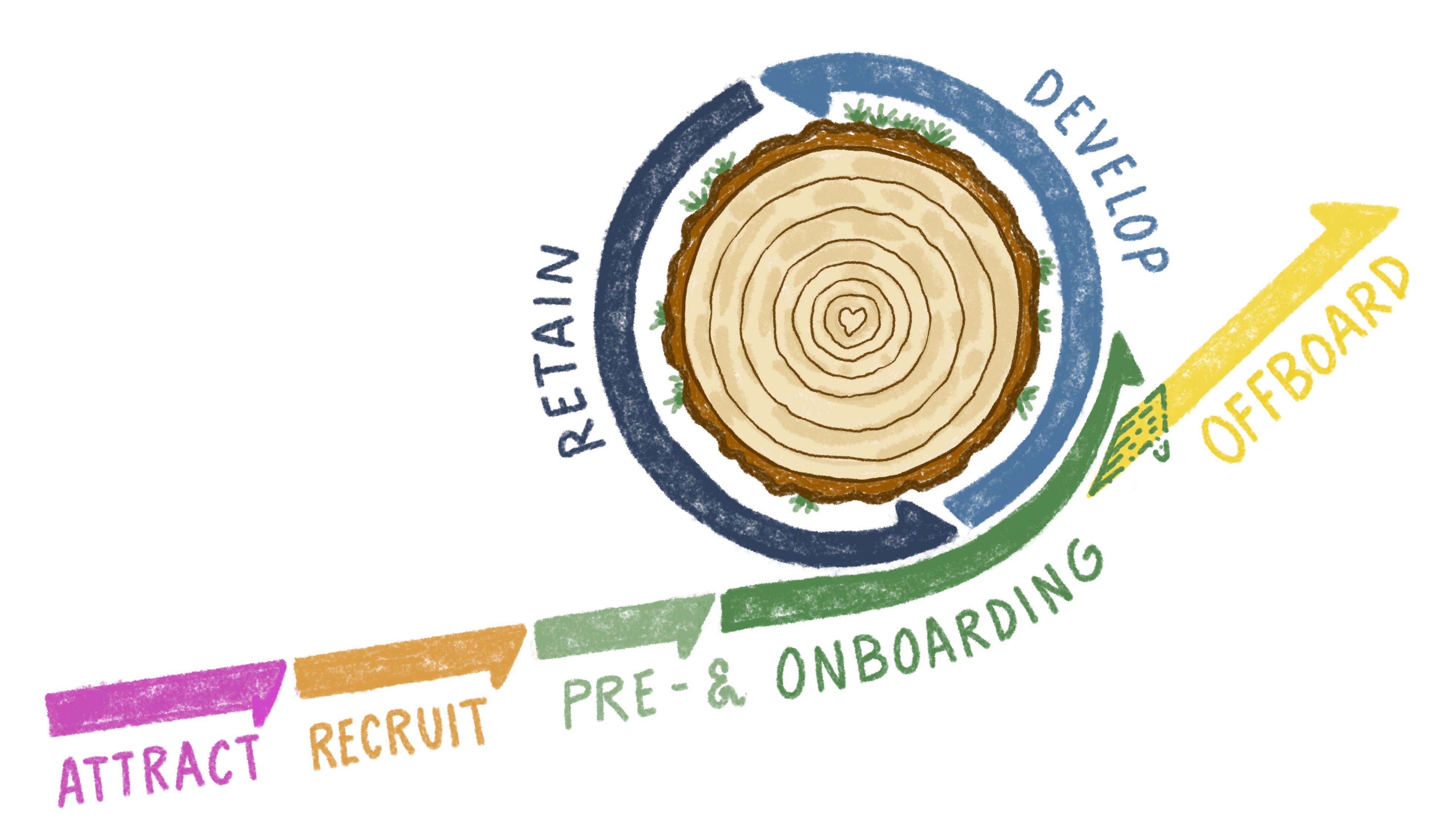Talent management is a vital aspect of HR, emphasizing how we nurture employees and meet the needs of today’s organizations. Central to this is the employee journey, a series of crucial steps or phases essential for effective employment. Let’s take a closer look!
Talent management – a strategic process in line with the company’s business goals – helps you build a high-performing workplace, promote a learning culture, strengthen your brand as an employer, and improve diversity. Streamlining the process involves different elements coordinating for success. This includes recognizing talent gaps, finding suitable candidates, and planning for career development and succession. While the HR department is mainly in charge of talent management, active involvement from managers and leaders is crucial.
– Talent management involves a well-rounded approach to engage, retain, and skillfully equip employees. When we talk about the employee journey, it usually mainly refers to when an individual is already on the inside, says Ulrika Skogland, Onboarding Manager at Learnifier.
Further reading: Upskilling and Reskilling: Unleashing the power of learning in a dynamic workforce
The recipe for a successful employee journey
The crucial steps in the employee journey include attracting and recruiting the employee, conducting preboarding and onboarding, promoting skills development and engagement, and ensuring that the offboarding process and exit are handled optimally.
– The initial step is mostly about making your organization an appealing employer. Nowadays, young talents seek purpose-driven companies with excellent growth prospects. To many, it’s more important than the salary. Simultaneously, alongside attracting the right team members, it’s crucial to have a streamlined recruitment process in place.
One way to boost skills and establish a standout brand is to become a learning organization, where knowledge exchange and encouragement for personal development are integral parts of your workplace culture.
– Becoming a learning organization doesn’t happen overnight and requires great commitment once the processes are established. But it’s worth the effort for organizations that want to be at the forefront.
Further reading: Creating a learning culture with Learnifier’s Mattias Borg

A strong start paves the way for success
The period between signing a contract and an employee starting is crucial. As an employer, providing effective pre-boarding is key for the employee to feel acknowledged and welcomed. This is ideally followed by a detailed onboarding process, beginning on the first day of work.
– During preboarding, the employee gains insights into your business, building on what was discovered in the recruitment process. While onboarding primarily addresses tasks and practical aspects, it’s beneficial to revisit preboarding elements. This is crucial due to the abundance of information that needs to be absorbed in a short period.
Further reading: Unlocking the potential of new hires – 20 reasons to invest in onboarding
With progress comes commitment
Usually, onboarding takes around six months. The following phase in the employee journey involves fostering skills development and engagement, something many find difficult. A culture of continuous learning and self-leadership opportunities are two key elements that significantly contribute to overcoming this challenge.
– Organizations promoting ongoing development through upskilling and reskilling gain a distinct edge in maintaining employee commitment. Rather than losing valuable team members, suitable roles within the organization can be explored. To retain top talent, you must stay open to alternative approaches and recognize individual strengths.
Enhancing skills is crucial for both managers and employees. Through ongoing leadership training, managers can better comprehend their team members and effectively address their requirements.
– Investing in leadership and soft skills consistently enhances organizational culture and reinforces your reputation as an employer. This not only produces benefits in the short term but also contributes to long-term profitability.
Let the end be a good beginning
The final phase in an employee’s journey is, predictably, the termination of their employment. While most organizations recognize the significance of effective onboarding, offboarding is often overlooked, even though it holds equal importance. When an employee resigns or retires, the impact on your organization can vary depending on the position. Nevertheless, it frequently disrupts workflow, influences team morale, and results in knowledge gaps. Additionally, it raises recruitment and training costs and may make the current employee’s workload heavier.
– Consistent knowledge sharing and succession planning are crucial for handling transitions smoothly when someone leaves and a new person joins. A thoughtful offboarding process not only fosters a positive organizational culture but also cultivates future ambassadors, Ulrika Skogland concludes.
Further reading: Offboarding – Why a smooth goodbye ensures a brighter tomorrow
With Learnifier, you get a useful tool throughout the employee journey – from recruitment and onboarding to upskilling and offboarding. Our platform empowers you to effortlessly develop effective and measurable courses, elevating individual skills and the overall competence within your organization. Curious to see what an employee journey can look like in Learnifier?
.png?width=153&height=58&name=Learnifier%20TextLogo%20NearBlack%20-%20PNG%20MEDIUM%20-%20800px%20(2).png)






